How Do Organisms Reproduce? The Best Guide For Class 10 Science Chapter 7
Welcome to iPrep, your Learning Super App. Our learning resources for the chapter, How do Organisms Reproduce? in Science for Class 10th are designed to ensure that you grasp this concept with clarity and perfection. Whether you’re studying for an upcoming exam or strengthening your concepts, our engaging animated videos, practice questions and notes offer you the best of integrated learning with interesting explanations and examples.
Welcome to our exploration of reproduction—a fundamental biological process essential for life. In this blog, we’ll cover the basics of reproduction, including its types, methods, and significance in living organisms. Let’s dive into the fascinating world of reproduction!
Objectives Of Learning How Do Organisms Reproduce?
As we delve into Class 10th Science Chapter 7 – How do Organisms Reproduce? Our objective is to uncover the fascinating processes that enable life to persist and thrive. Understanding reproduction is crucial for comprehending how organisms maintain their populations and adapt to their environments. In this chapter, you will learn about the different types of reproduction, including asexual and sexual methods, and explore their significance in the biological world. By the end of this chapter, you will not only grasp the mechanisms of reproduction but also appreciate the intricate connections that sustain life on our planet. Join us on this exciting journey into the world of reproduction!
What is Reproduction?
Reproduction is the biological process by which living organisms produce new individuals of their kind. This ensures the continuation of species and the increase in their population. For example, dogs reproduce to give birth to puppies that are similar to themselves.
Why Do Organisms Reproduce?
While understanding how do organisms reproduce, it is also important to understand why they reproduce. Reproduction is crucial for several reasons:
- Increase in Population: Reproduction helps in increasing the number of individuals in a population.
- Perpetuation of Species: It replaces dead individuals with new ones, ensuring the survival of the species.
Types of Reproduction
As stated in the chapter – how do organisms reproduce, Reproduction can be classified into two main types:
Asexual Reproduction
Asexual reproduction involves a single parent and does not involve sex organs or meiosis. This type of reproduction produces new individuals that are genetically similar to their parents, with no variations. It is a quick method of multiplication.
Methods of Asexual Reproduction

Here are some common methods:
Method
Description
Binary Fission
A single organism divides into two equal parts. Example: Bacteria.
Budding
New individuals grow from a bud on the parent organism. Example: Hydra.
Fragmentation
Organism breaks into fragments, each developing into a new individual. Example: Spirogyra.
Vegetative Propagation
New plants grow from parts of the parent plant. Example: Grafting.
Spore Formation
Reproduction via spores, which develop into new individuals. Example: Fungi.
Regeneration
Organism regenerates lost parts or whole new individuals from parts. Example: Planaria.
Detailed Examples
- Budding in Hydra: A bud forms on the parent hydra, develops into a new hydra, and then separates.
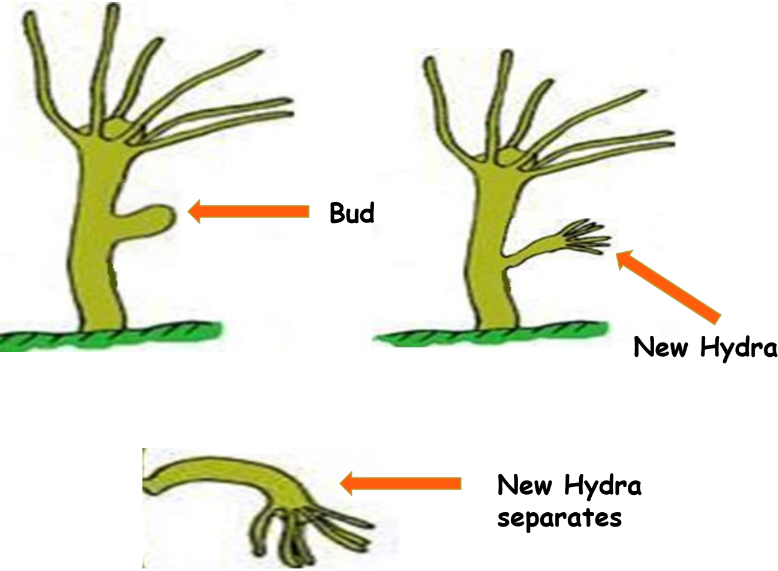
- Fragmentation in Spirogyra: Spirogyra breaks into segments, each growing into a new organism.
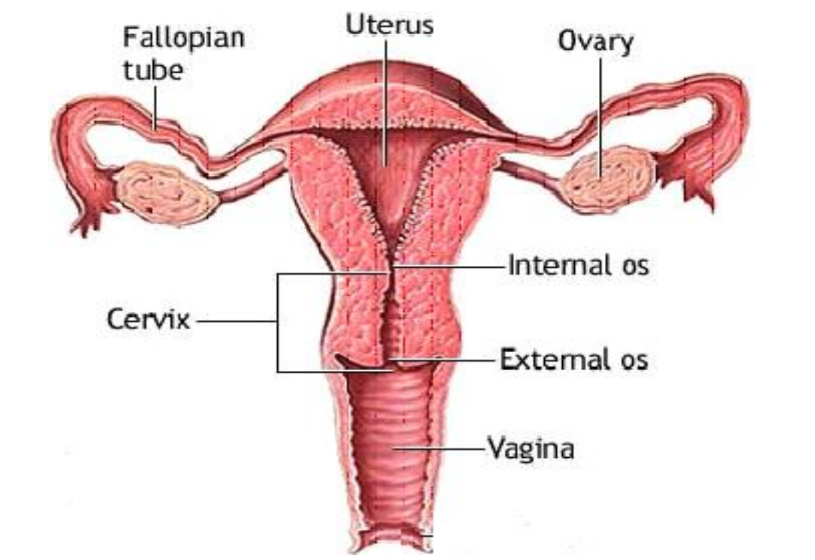
- Grafting: Involves joining a graft to a stock, allowing the two to grow together and form new plant parts.
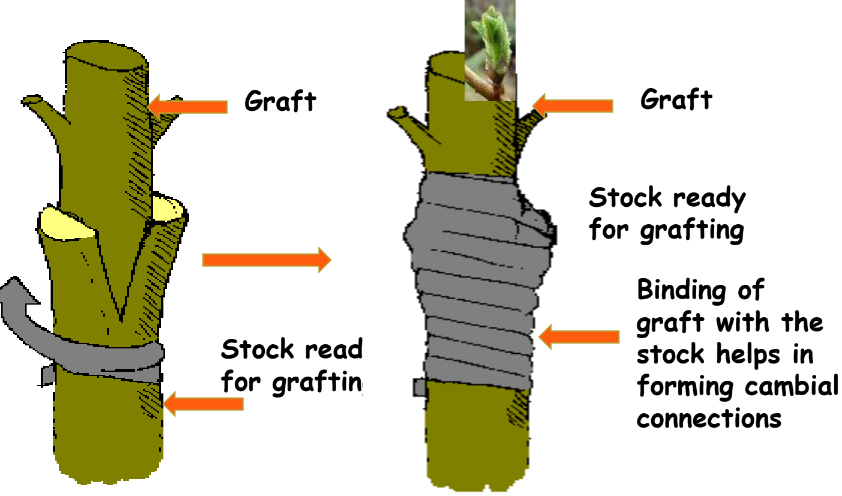
- Regeneration in Planaria: Planaria can regenerate lost body parts from cut pieces.
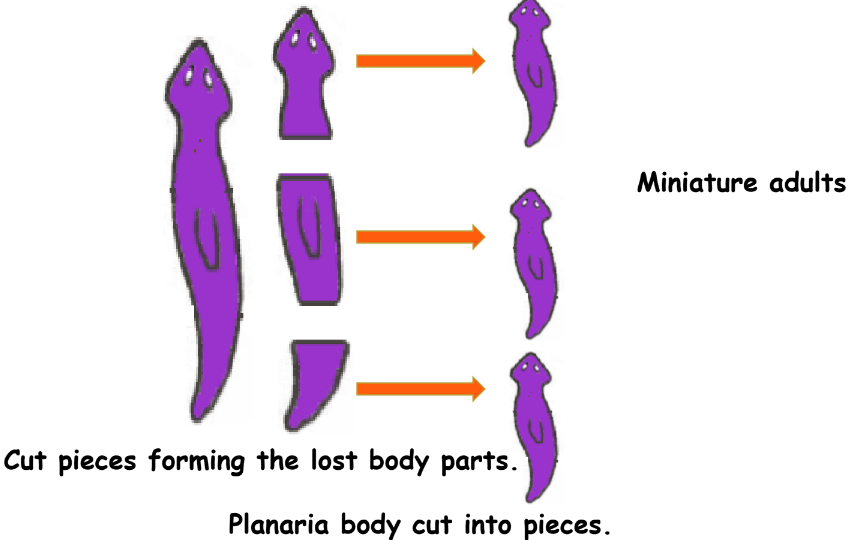
Tissue Culture
According to the chapter – how do organisms reproduce, Tissue culture is a method of growing new plants from small amounts of undifferentiated tissue or single cells placed in an artificial environment.

Sexual Reproduction
Sexual reproduction involves two individuals of opposite sex and includes the combination of DNA from both parents. This process results in offspring with genetic variation.
Sexual Reproduction in Plants
Sexual reproduction in plants involves the following flower parts:
Part
Description
Calyx
The outermost group of green sepals.
Corolla
The group of colored petals.
Stamen
The female reproductive part consists of the stigma, style, and ovary.
Carpel
The female reproductive part consisting of the stigma, style, and ovary.
Pollination
Pollination is the transfer of pollen grains from the anther of the stamen to the stigma of the carpel. It can be carried out by:
- Wind
- Water
- Insects
Types of Pollination
| Type | Description |
| Self-Pollination | Transfer of pollen within the same flower or plant. |
| Cross-Pollination | Transfer of pollen from one flower to another flower on different plants. |
Sexual Reproduction in Humans
As per the chapter – how do organisms reproduce, Human reproduction involves two types of individuals based on sex: male and female. During adolescence, both boys and girls undergo significant physical changes, marking the onset of puberty, which typically occurs between ages 10-14 for girls and 12-16 for boys.
Male Reproductive System
As stated in the chapter- How do organisms reproduce, The male reproductive system includes:
- Sperm Ducts
- Penis
- Urethra
- Testis
- Scrotum
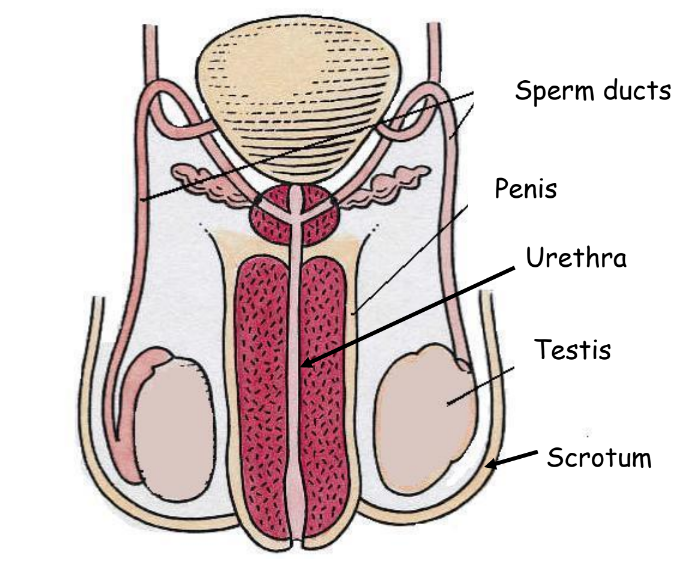
Female Reproductive System
The female reproductive system is involved in producing eggs and includes several internal organs not specified in detail here but essential for reproduction.

Menstrual Cycle
The menstrual cycle is a recurring series of physiological changes in females. It includes:
- Ovulation: Production of an egg.
- Thickening of Uterine Lining: Preparation for possible implantation.
- Menstrual Flow: Shedding of the uterine lining if fertilization does not occur. The cycle repeats approximately every 28/29 days.
Reproductive Health
Reproductive health is a state of physical, mental, and social well-being concerning the reproductive system. It can be affected by sexually transmitted diseases (STDs) such as AIDS, Gonorrhea, and Syphilis.
Contraceptive Methods
Contraceptive methods are used to prevent pregnancy and include:
Type
Examples
Mechanical Barriers
Condoms, Diaphragms
Chemical Methods
Birth control pills, Spermicides
Surgical Methods
Sterilization procedures
Key Takeaways
Here’s a quick summary of key points:
- Reproduction: Process by which living organisms create new individuals.
- Asexual Reproduction: Involves a single parent; methods include binary fission, budding, fragmentation, vegetative propagation, spore formation, and regeneration.
- Sexual Reproduction: Involves two parents and results in genetic variation; includes pollination and fertilization.
- Tissue Culture: Technique to produce plants from tissue samples.
- Contraceptive Methods: Techniques to prevent pregnancy.
Understanding these fundamental concepts of reproduction will give you a solid foundation in biology. Keep exploring to learn more about the amazing processes that sustain life!
If you liked this summary and want to read a similar post on Class 10 Science Chapter 9 – Light – Reflection and Refraction, click here.
Let’s Conclude
In conclusion, understanding CBSE Class 10th Science Chapter 7 – How do Organisms Reproduce? is essential for grasping the fundamental biological processes that underpin life on Earth. We have explored the two main types of reproduction—asexual reproduction, which allows for rapid population growth without genetic variation, and sexual reproduction, which introduces genetic diversity and is crucial for the evolution of species.
By studying methods like binary fission, budding, and the intricate processes involved in human reproduction, you can appreciate the complexity and beauty of life. As you continue your studies, keep revisiting How do Organisms Reproduce? to reinforce your understanding and prepare effectively for your exams. With the resources available through iPrep, including engaging videos and practice materials, you are well-equipped to excel in this chapter and beyond. Happy studying!
Practice questions on Chapter 7 - How Do Organisms Reproduce?
Get your free Chapter 7 - How Do Organisms Reproduce? practice quiz of 20+ questions & detailed solutions
Practice Now








